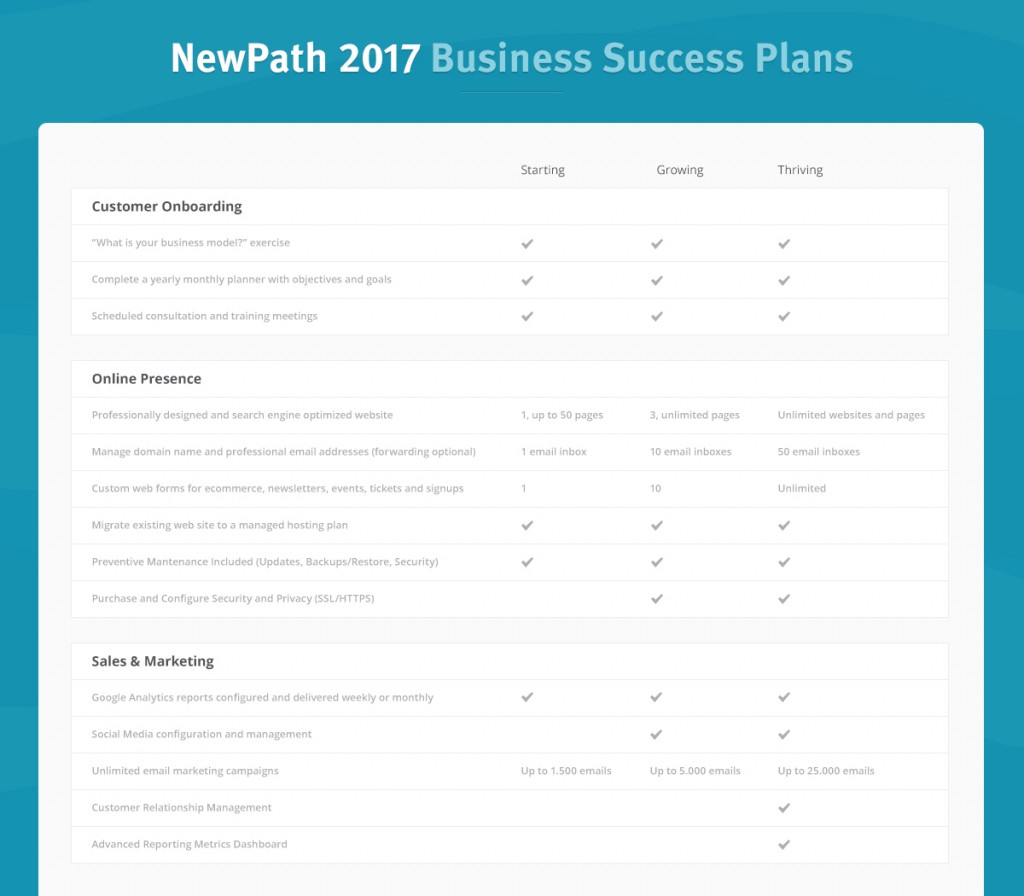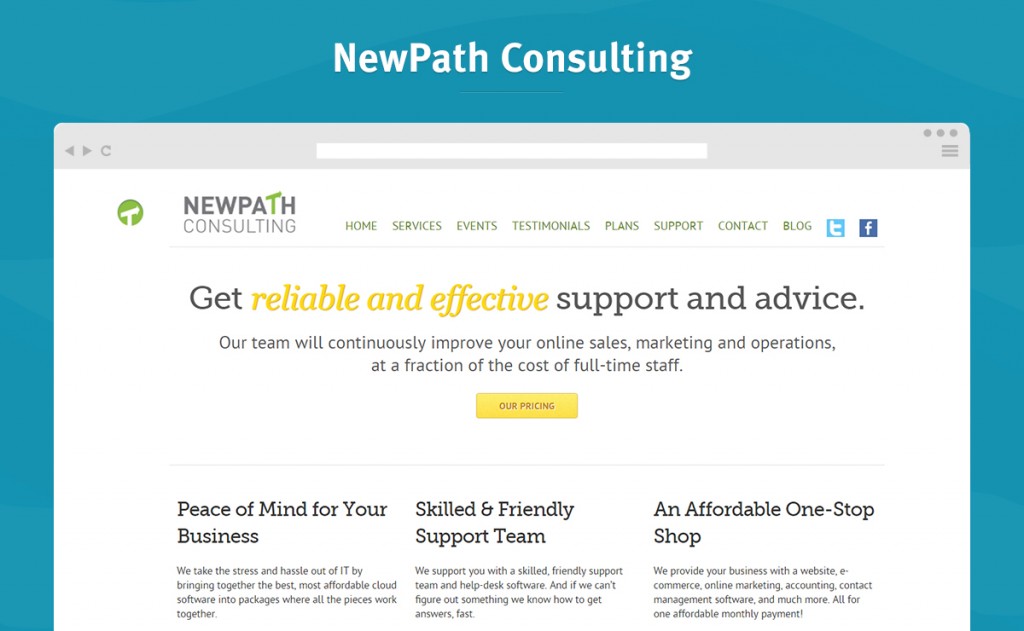Website care plans (aka web maintenance plans) are one of the standard business models chosen by web professionals today. With a website care plan customers have access to part-time web professionals who ensure their websites are running in top shape. In this article I will extend website care plans way beyond their current scope and make a case for business success plans.

Website Care vs Business Success
Technology contractors normally work on a time-and-materials (T&M) basis. Project requirements are collected and written by the business customer, and contractors bid on the carefully defined projects. But, several thorny issues can arise in a T&M contract format. Successful technology service vendors must become business partners, understanding their customer’s day-to-day challenges and intimately learn their customer’s business model.
Danger Ahead: Scope Creep
The core issue in T&M projects: customers rarely describe their business requirements adequately.This makes it difficult for the vendor or contractor to ensure scope is adequately defined, accurate pricing is proposed and delivery, timelines are accurately estimated. Once the project begins, with partially complete scope, the customer inevitably changes their mind once they understand more about what they are getting. As customers start to see working systems and processes, they start to veer off into scope creep. Customers have a tendency to react to the implementation details and to introduce “what if we could…” questions known as scope creep.
Unfortunately, the need to manage scope (and budget) creates a conflict between the customer and vendor, and sometimes leads to a confrontation. The customer tries to get more ‘stuff’ done under a fixed price, leaving the vendor to reset expectations and even cut corners sacrificing quality to meet the deadlines. T&M, fixed-price contracts usually undermine the creative collaboration required to produce high-quality working systems which address both customer business objectives and satisfy a contractor’s profitability motive.
The Launch is Only Step 1
Web design professionals (and even some customers) realize after the launch that the work has just begun. Most IT professionals agree the majority of technology projects fail due to a lack of customer adoption and/or satisfaction. Most IT projects fail due to a lack of an adequate maintenance budget. A maintenance budget provides the opportunity for the vendor to produce regular feature and performance updates based on iterative customer feedback.
Maintenance plans must include training, support and space to tune and tweak the system post-launch. In project bids, maintenance plans, when included, account for 10-20% of the total cost of the project. I believe technology projects should allocate at least 50-80% of the budget to long-term maintenance, depending on the quality of the initial scope articulation. But what if we agreed to build technology as maintenance plans right from the start? What if every project is essentially a continuous series of scope elaborations, implementation of well-defined scope and steps to improve the results?
Re-balancing Risk for Business Success
At NewPath Consulting, I consider business success plans the primary mechanism by which technology projects are conceived, designed, built and supported over a long term delivering value continuously. The recurring, subscription-based business model as applied to software and services is inherently a novel idea: the model re-balances the risk between the customer and the vendor.
Under traditional T&M projects the risk is mostly with the customer to extract value out of the solution after implementation. Custom coding tilts the risk towards the customer forcing them to take on expensive code maintenance. Once the vendor is out of the picture, it’s up to the customer to make sure the solution improves their business position.
To re-balance risk, I look for software products that can be configured but require little, if any, code customization. Software-as-a-Service (SaaS) products ‘hired’ to solve a particular job are the best fit for small to medium sized businesses. When there is a need for something not available out-of-the-box, I look into the huge ecosystem of solutions. I give feature suggestions to our software partners. Avoiding custom coding by plugging together constantly evolving SaaS products ensures customer success, a win-win proposition.
How NewPath Consulting Evolved Pricing
Practically speaking, the price of a T&M project is usually dictated by the customer’s budget. For the past 4 years I tested various pay-as-you-profit pricing models and have come up with three tiers which reflect the lifecycle of a successful business: starting, growing and thriving.
The first incarnation of business success plans were priced at CAD $79 / $299 / $599. After operating on these plans for 2 years I found something jarring. It was difficult to make any profit delivering business success for our customers – the main value proposition of a business success plan.
During the first 6-12 months of an engagement, we work to understand what our customers wanted to accomplish in their business. We built out various solutions to address business needs and see if they take hold. We shore up existing solutions, migrate data and systems to our recommended SaaS products. We transform processes restricting our customers’ growth. I noticed customers were getting a ton of value! So I tripled the cost of each tier.
To my surprise getting customers at the newly priced tiers was not any more challenging. And the customers we brought on board were more serious about their businesses, and further along in understanding what they actually needed. And we stopped using the word “client” to refer to our customers. Clients buy only once, whereas customers buy repeatedly as is the custom.
Target 2017: Clarify the Business Success Plan
I have started a process, inspired by the GoDaddy/WP Elevate webinar, to further refine and define what each business success care plan features. Here is a sneak peak at a set of refined “Business Success Plans” for 2017.

Customers in a greenfield situation with no technology or existing processes at all are rare. They have started to build a stack of technology solutions, but are without a clear strategic idea of how to ensure their business is supported by these solutions. Therefore it is critical to clarify the value of a business success plan. Just like buying a mobile phone plan or TV service package, the terms must be spelled out in clear, plain language. This is pretty tough to do as it turns out when it comes to business success plans, but I am up for the challenge.


Leave a Reply